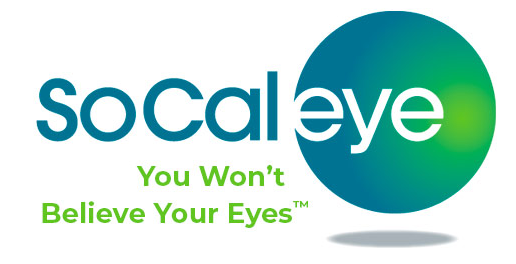
For the over 40 crowd who are beginning to feel the effects of Presbyopia, the prospect of needing glasses after selecting LASIK surgery is often a cause for pause. Monovision LASIK may be the answer and LASIK surgeons are seeing a rise in the number of cases. The LASIK specialists at SoCal Eye in Long Beach would like to explain more.
What is Monovision LASIK?
Monovision LASIK is a refractive surgery technique designed to address presbyopia, a condition where the natural lens of the eye loses its flexibility, leading to difficulty in focusing on close objects. Unlike traditional LASIK, which aims to correct distance vision in both eyes, monovision LASIK intentionally adjusts one eye for distance vision and the other for near vision. In this procedure, the dominant eye is typically corrected for distance vision, allowing the patient to see clearly at far distances. Meanwhile, the non-dominant eye is adjusted for near vision, improving the ability to focus on close-up tasks. The brain adapts to this difference in prescription, essentially selecting the appropriate eye for the intended distance. Monovision LASIK surgery is exactly the same as traditional LASIK but the target prescriptions are adjusted to allow the Monovision and the balancing of distance vision and near vision.
Who is a Good Candidate for Monovision LASIK?
Good candidates for monovision LASIK are generally individuals experiencing presbyopia, typically around the age of 40 or older. Presbyopia affects the eye’s ability to change focus, making it challenging to read or perform close-up tasks. Candidates should also have stable vision prescriptions, generally with a low to moderate degree of nearsightedness or farsightedness. Candidates must have realistic expectations about the potential compromise in-depth perception and contrast sensitivity that may accompany monovision.
Candidates for monovision LASIK undergo a thorough eye examination to assess their overall eye health, refractive errors, and corneal thickness. The eye surgeon evaluates the dominant eye, considering factors such as tear film quality, pupil size, and corneal curvature to determine the most suitable approach for the individual. At this point, the surgery is the same as regular LASIK. (LASIK – What to Expect)
While monovision LASIK can be highly effective for many individuals, it may not be suitable for everyone. SoCal Eye Physicians will propose a trial period using contact lenses to give the patient a chance to ‘test drive’ the prescription before proceeding with surgery. Some people find it challenging to adapt to the visual trade-off between eyes, and others may experience reduced depth perception or visual quality. Additionally, individuals who require precise depth perception for their profession or activities, such as pilots or professional athletes, may not be ideal candidates.
SoCal Eye – Monovision LASIK in Long Beach
Ultimately, the decision to undergo monovision LASIK should be made in consultation with an experienced eye surgeon, who can assess individual needs, lifestyle factors, and visual expectations. The goal is to achieve a balance that optimizes vision for both near and far distances, enhancing overall visual flexibility for those affected by presbyopia.
SoCal Eye offers the latest in technology to ensure the most precise level of mapping and measurement and the highest level of customization. We invest heavily in technology and training to ensure the highest level of care and the greatest outcomes. All treatment begins with a Consultation with a SoCal Eye LASIK Specialist or Refractive Surgeon in Long Beach. For LASIK Treatment in Long Beach, Schedule an Appointment today at (562) 598-7728 or send us an Online Consultation Request




